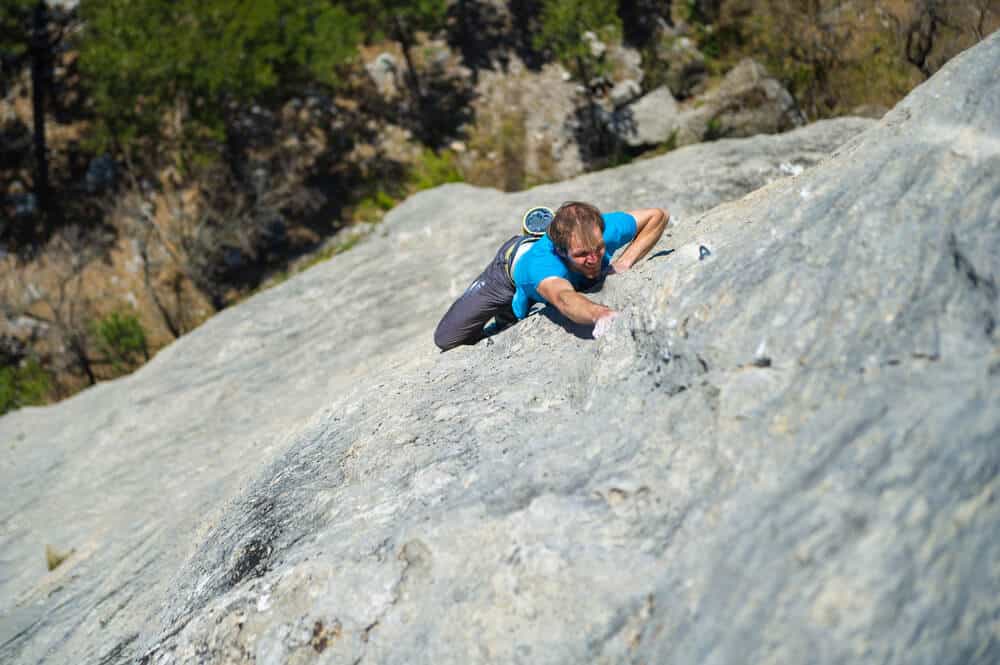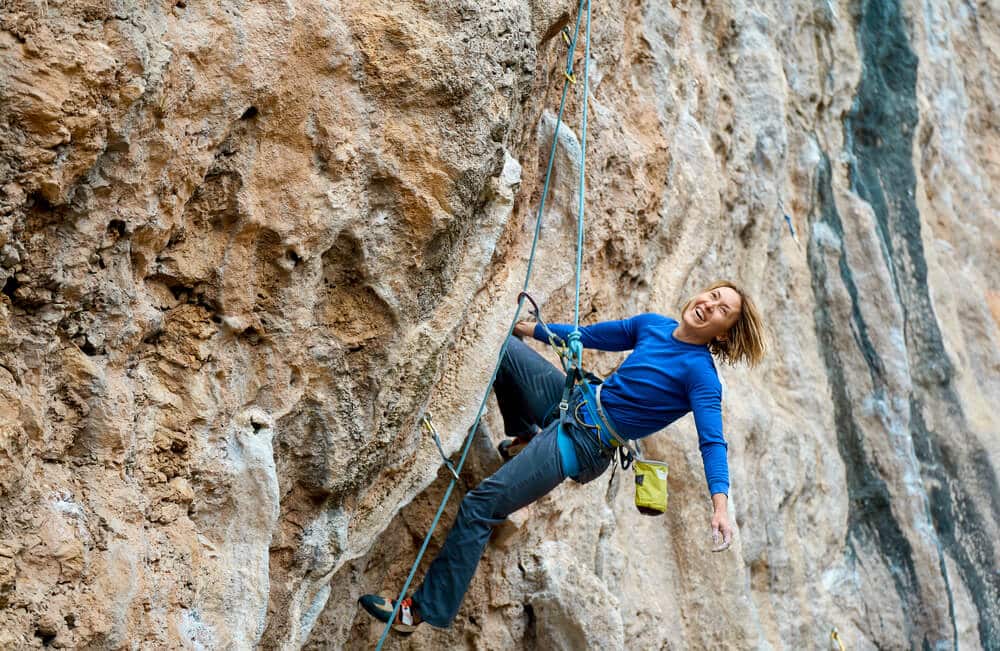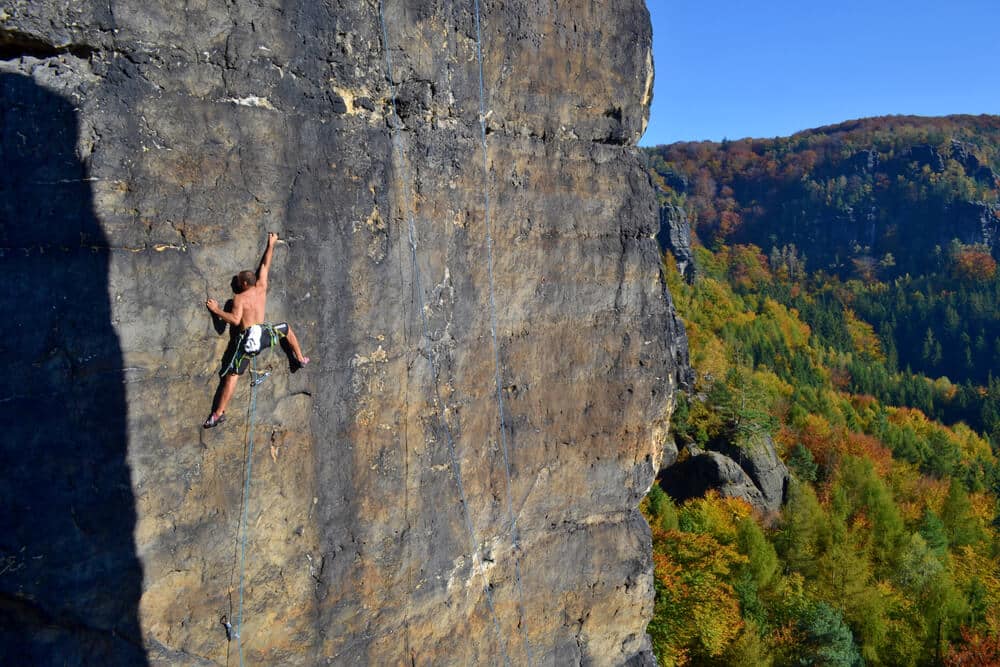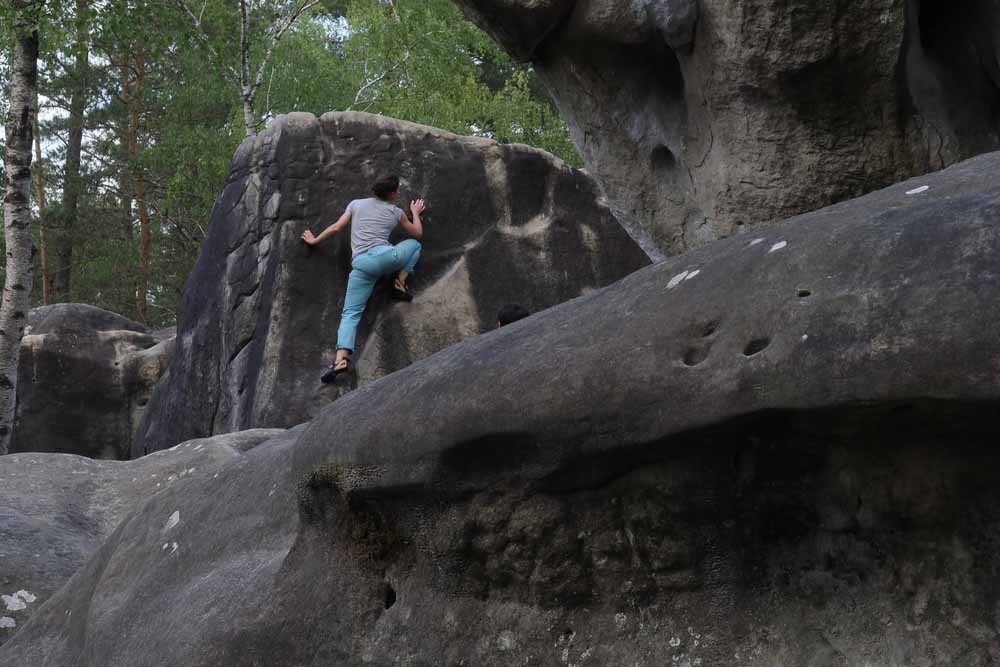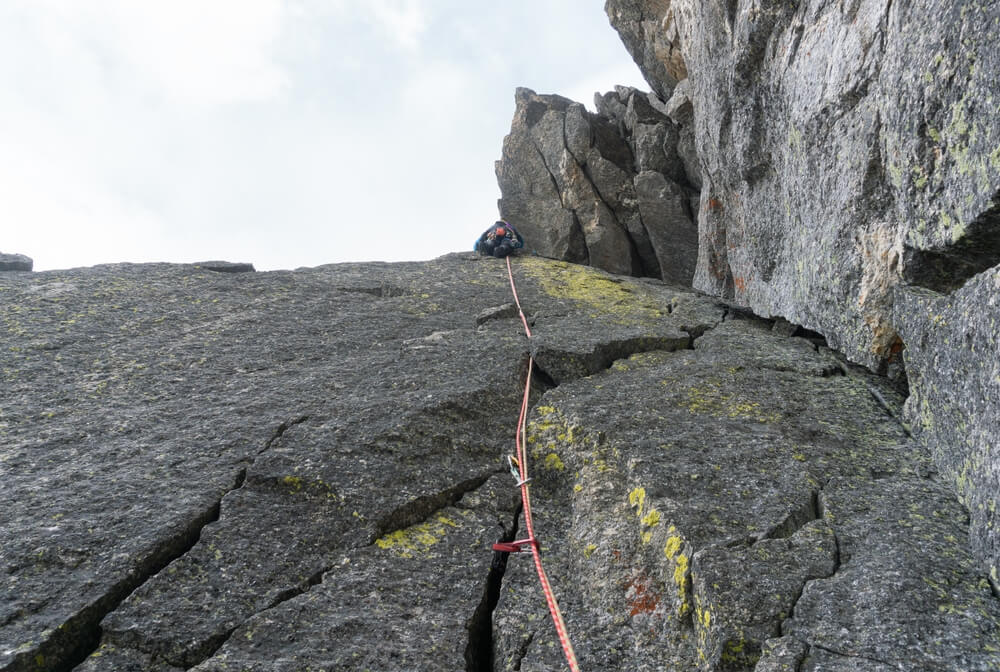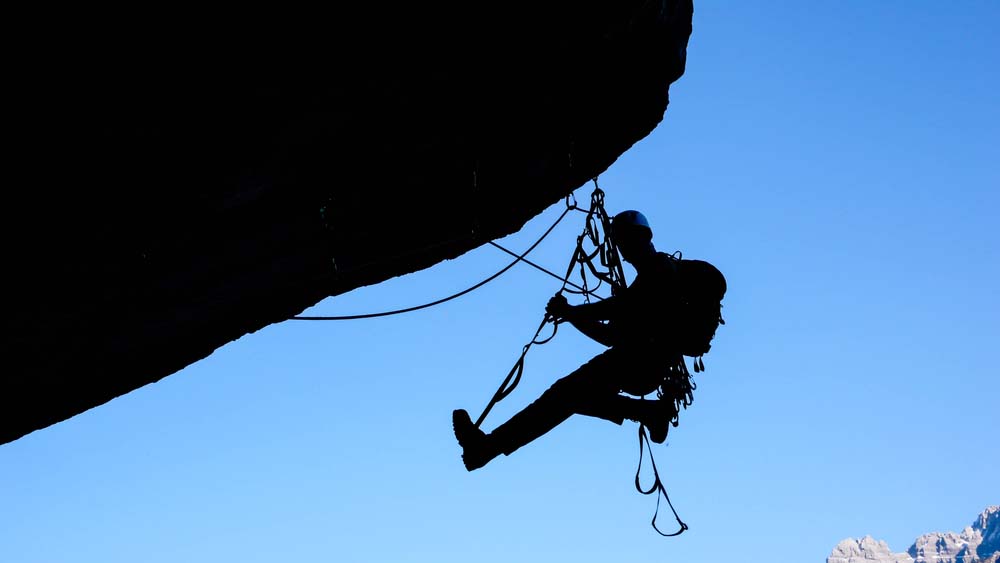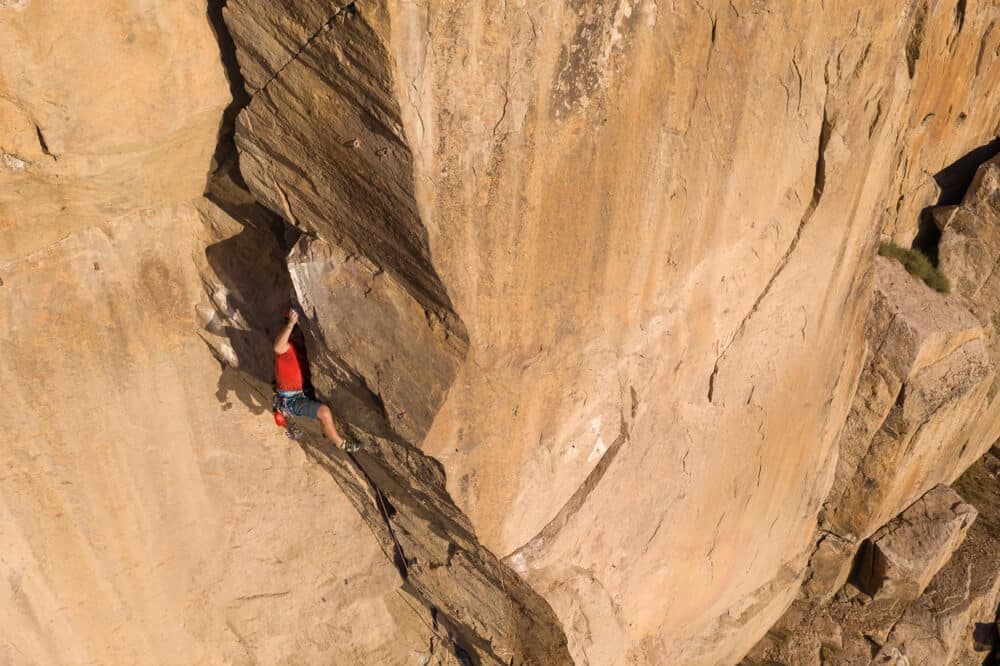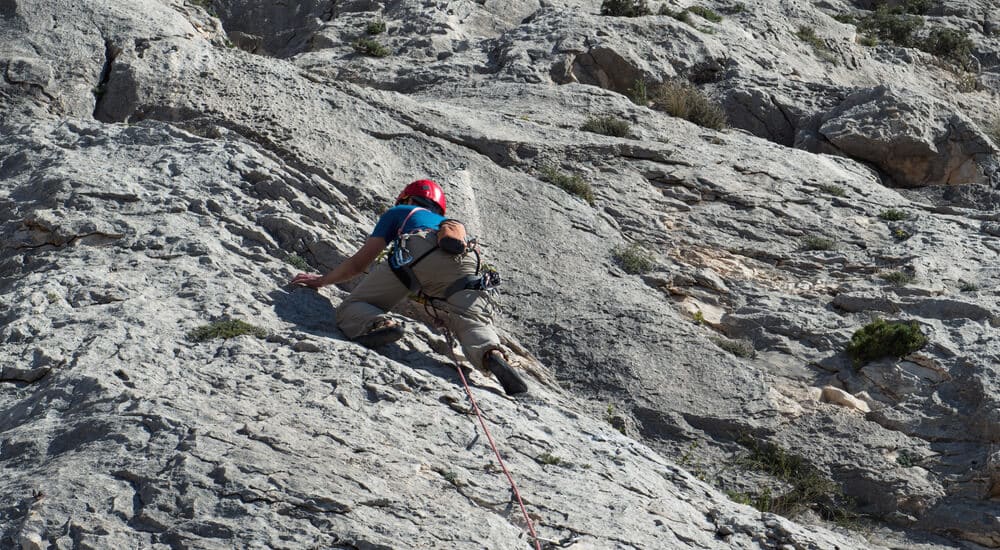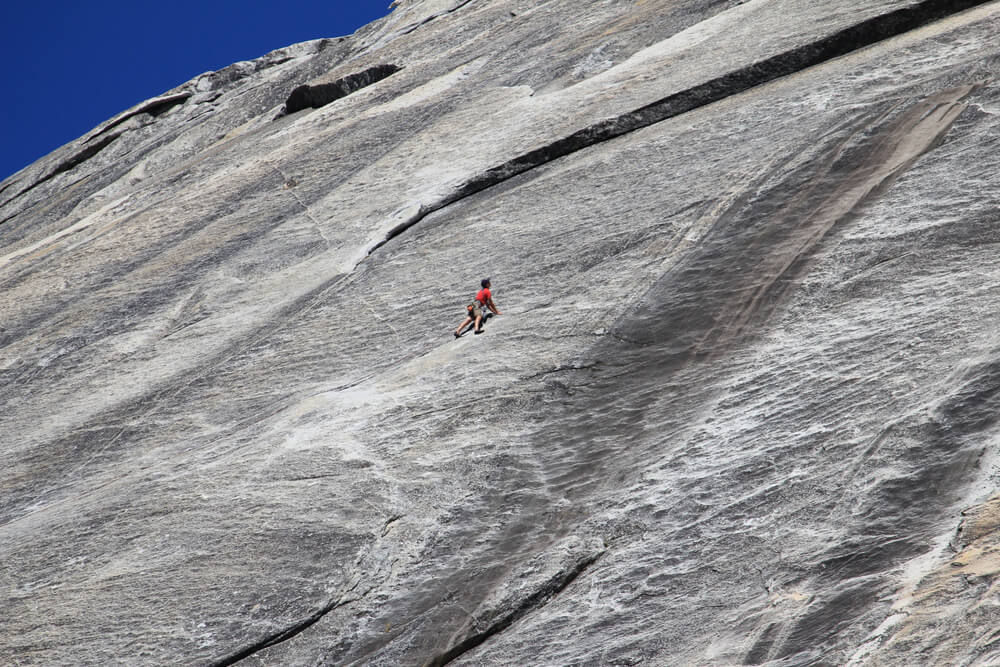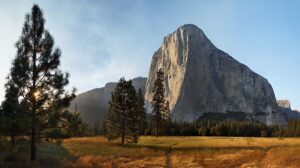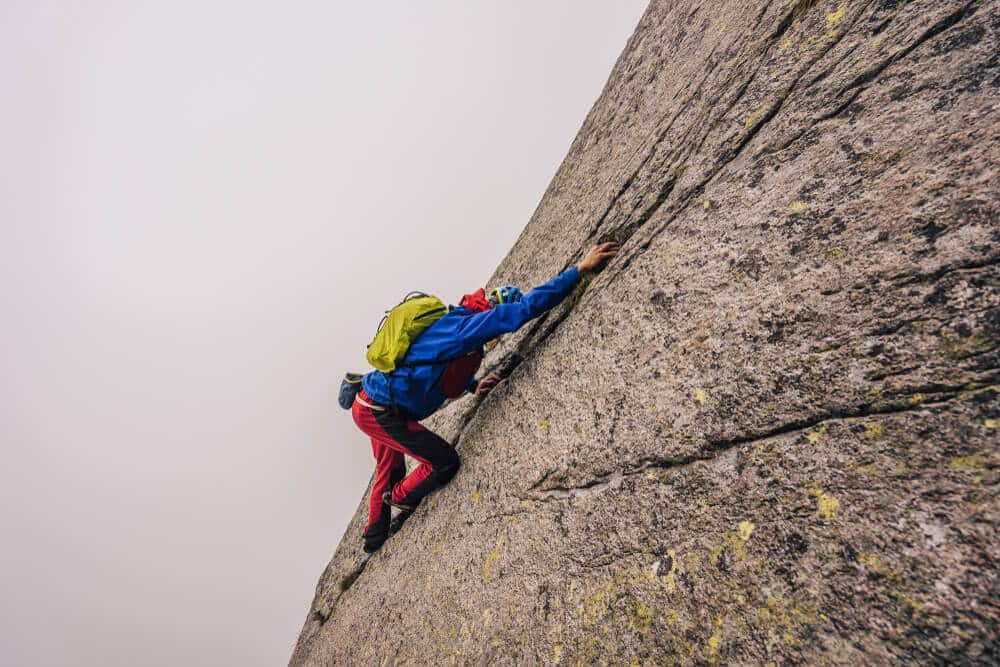The 2018 film, Free Solo, deposited rock climbing into the limelight. In particular, the film highlighted a niche style of climbing called free soloing. To further complicate matters, the film depicted a free solo ascent on one of the largest pieces of rock in North America, documenting one of the most impressive free solo ascents known to mankind.
Unfortunately, after the film, many lay people (non-climbers) defaulted to thinking that all rock climbers are adrenaline-fueled junkies with a death wish and a propensity to free solo. Or that all rock climbing involves free soloing. However, that couldn’t be further from the truth.
So to help alleviate some of the confusion around what free soloing is and how it differs from other styles of rock climbing, I want to discuss free soloing in detail.
An Unfortunate Outcome of the film, Free Solo
 Photo by Jimmy Chin
Photo by Jimmy ChinI really enjoyed the film Free Solo. Documenting Alex Honnold’s free solo ascent of Yosemite’s El Capitan was groundbreaking not only for rock climbing but also for filmmaking. However, since its debut, I’ve noticed an unfortunate outcome.
What was once a mundane pastime for highly experienced rock climbers looking for an easy jaunt up their local stone playground has been inaccurately transformed into a thrill-seeking spectacle that not only misrepresents free soloing but also other forms of climbing.
Now, to be clear, I don’t think it’s the film itself that misrepresents free soloing. I think the movie did a fine job of portraying the climb as something that was methodically calculated, rehearsed, and taken very seriously.
However, despite that, for whatever reason, many audience members came away from the film with an inaccurate understanding of what free soloing is and how it differentiates from a much more popular (and safer but similarly sounding) style of climbing called free climbing.
Free Soloing vs. Free Climbing
I’ll say it again– all free soloing is free climbing, but not all free climbing is free soloing. Now, let me explain.
Free Soloing or Soloing
Free soloing is a style of climbing that involves zero protective gear. In other words, a free soloist leaves the ground with no system to protect them in the event of a fall. Instead, they rely on nothing but their climbing technique and decision-making to navigate the rock and reach the top safely.
For most climbers, soloing is not a rapid, adrenaline-filled pursuit. On the contrary, for most, soloing is slow, calculated, methodical, and controlled. Typically, free soloists prefer to solo routes in which they have climbed many times before. Therefore, they can be 100% familiar with the route and control as many of the variables as possible.
However, in climbing, there are variables you cannot control and outcomes you cannot predict. Mistakes can be made from poor decision-making or sheer bad luck. And unfortunately, due to the lack of safety equipment, a fall while soloing almost always results in serious injury or catastrophic fatality.
Free Climbing
On the other hand, free climbing is a style of rock climbing that does involve the usage of protective equipment. A free climber ties into a climbing rope and clips into climbing protection as they ascend upwards. On the other end of the rope, a belayer uses a belay device to save the climber in the case of a fall.
Free climbing gets its name from the fact that the climber uses no artificial aid to propel them upwards. In other words, free climbers rely only on their fingertips and toes to pull and push themselves up the wall.
Free climbing is the direct evolution of an older style of climbing called aid climbing. But before we get to that, I want to discuss what styles of rock climbing fit underneath the free climbing umbrella.
Types of Free Climbing
Free climbing is an umbrella term that encompasses other styles of rock climbing. Let’s briefly discuss what is considered free climbing and then what is not.
Bouldering
Bouldering is distinct from other forms of climbing because the sport takes part closer to the ground on smaller rock walls or boulders. In bouldering, a climber does not use a rope or clip protection to mitigate the risk of a fall. Instead, boulderers line the landing zone of a boulder with foam “crash pads” to soften the landing of falls. In addition, in bouldering, a climber does not use aid climbing techniques to ascend the rock feature.
Therefore, bouldering is a form of free climbing. In reality, bouldering is a form of free soloing.
However, for whatever reason, boulderers do not consider themselves free soloists or their preferred style of climbing to be free soloing. I assume that’s because free soloing seems reserved for climbing larger rock walls with longer routes that usually require a rope and belay to climb safely.
However, there are plenty of larger rock formations and longer boulder problems that blur the line between bouldering and free soloing. This sub-type of bouldering is called “high balling”. However, for all intents and purposes, it’s free solo climbing.
Sport Climbing
Sport climbing is another type of free climbing. In sport climbing, a climber free climbs their way to the top, meaning they do not rely on aid climbing techniques to assist them. Instead, they pull and push on natural features of the rock to allow them passage upwards.
Along the way, sport climbers clip their rope into protective gear to mitigate the chances of a severe fall. On sport climbing routes, the protective gear consists of bolts drilled into and permanently fixed into the rock. Between the correctly clipped climbing rope and an adequate belayer, a lead climber can safely fall off the rock without hitting the ground.
Traditional Climbing
The third type of free climbing worth mentioning is traditional climbing, also known as trad climbing. Traditional climbing is considered free climbing because the lead climber does not rely on aid climbing equipment or techniques to assist their upward progress.
Like bouldering and sport climbing, a trad climber who is lead climbing (or top roping) only uses their body to climb upwards.
The nuance of trad climbing comes with how the leader protects traditional climbing routes against the risk of catastrophic falls. Instead of pre-placed bolts like in a climbing gym or sport climbing, a trad climber places temporary and removable equipment into the wall.
Then, they clip their rope into the equipment. Properly placed trad gear, along with high-quality rock and an adequate belayer, is what keeps trad climbers who are free climbing safe from a fatal fall.
Aid Climbing is Not Free Climbing. Nor is Aid Climbing Free Soloing.
Above, I explained that bouldering, sport climbing, and trad climbing are three forms of free climbing. That’s because the climber moves upwards using only their strength and natural climbing ability.
On the other hand, if a climber ascends a route using equipment to help them, like ascending devices and nylon ladders, they are aid climbing.
Before free climbing became popular, most climbers were aid climbing. They used whatever means necessary to reach the top, including installing permanent protection into the wall, like pitons, and using ascending techniques and ladders on fixed lines.
In other words, they were aid climbers, not free climbers. It wasn’t until climbers got stronger and climbing equipment got better (safer) that climbers began to free climb more often.
At first, free climbing became a means to repeat old aid routes in a better style and without aid equipment. For that reason, many old routes have a documented first ascent (FA) from the first people to top out the climb and a first free ascent (FFA) from the climbing party that topped out without aiding.
Eventually, after all the old aid lines went free, climbers began searching out new routes that had never been aided for climbing free. Or, like in the case of Lynn Hill on The Nose, female climbers began repeating old climbs that only male climbers had attempted, establishing first female free ascents (FFFA).
Lead Climbing Can Be Free Climbing Or Aid Climbing
The person who goes first up a climb, whether they are free climbing or aid climbing, is lead climbing. In other words, lead climbing is when a climber leads up a pitch of rock, either placing gear or clipping fixed gear if sport climbing.
Due to the fact that they are placing and clipping their gear into protective equipment and using a belayer, lead climbers are not free solo climbing.
Subsequently, the leader’s climbing partner follows or seconds the pitch, retrieving the gear so it can be reused for another pitch, like on big walls or a multi-pitch route. Or so the gear can be used again on a completely separate climb in a single-pitch sport climbing setting.
The style through which the leader (and the second) climbs the route dictates whether or not they are free climbing or aid climbing. If they free all the moves, they did not use artificial means for upward progress. In other words, they free climbed.
On the other hand, if they pulled on gear or deployed aid climbing tactics to assist their ascension, they were aid climbing, and the route was not climbed free.
The tactics that a leader deploys can differ from the second. For example, on big walls, it’s common for the leader to free climb while the second aid climbs up a fixed-line.
Or, both members of the rope party will aid certain sections and free others. It all depends on the abilities of the climbers and their personal preferences regarding the style through which they want to attempt the route.
The Same Goes for Rope Soloing
First off, rope soloing is not soloing. That’s because, in roped soloing, the climber uses a mechanical self-belay device and rope system to protect themselves while climbing. The tactics deployed by the climber to ascend will dictate whether or not they are aid climbing or free climbing.
Yes, they are climbing alone or solo, but they are not free soloing.
If they only use their own power to climb the rock face, then they are free climbing. However, if they ascend up the rope, pull on gear, or use ladders to climb the rock face, then they are aiding.
Do I Practice Free Solo Climbing in My Work?
My clients ask me all the time if I “free solo.” Well, actually, they ask if I “free climb.” To which I respond, “Yes, all the time. We are free climbing right now.” Then they give me a confused look and I explain that what they probably meant to ask me was if I “free solo” and not “free climb.”
The answer is yes, I often climb without protection while I’m out guiding. Most often, it’s when I am scrambling up a section of 4th or low 5th-class terrain to set up top ropes. Or when I am leading the beginning of a pitch before I’ve had the opportunity to place my first cam or stopper.
So, I explain it to my clients like this– there are risks involved in all types of work. In my case, climbing without protection or solo climbing is required in my line of work. I mitigate the risk to the best of my ability by relying on my expert movement skills, climbing slowly and controlled, and becoming intimately familiar with sections of rock that require soloing. And if I am ever not feeling it, in most cases, I can simply just ask for a belay and place some gear.
Focus on Free Climbing and Let Alex Honnold Solo
So there you have it. If you rock climb outside or in a climbing gym, then you are free climbing. But you are not soloing.
In other words, you rely solely on your body to climb upwards, and you do not use additional equipment to aid or assist your upward progress; otherwise, that would be aid climbing.
If I were you, I would keep it that way. Let Alex Honnold solo in Yosemite Valley, and you focus on free climbing. Although still dangerous, free climbing is much safer than soloing because of the protective equipment you employ to prevent routine falls from transforming into severe accidents or, worse, fatalities.
But if you do get into free solo climbing, I wish you the best of luck and hope you transition into the style only after many, many, many years of climbing experience and with a deep familiarity with the rock you plan to solo.


